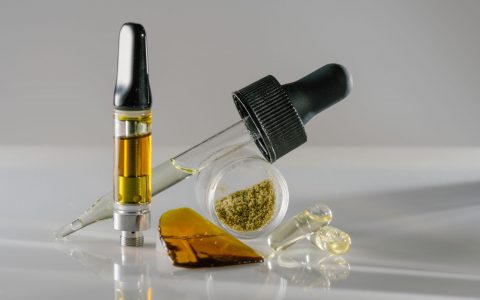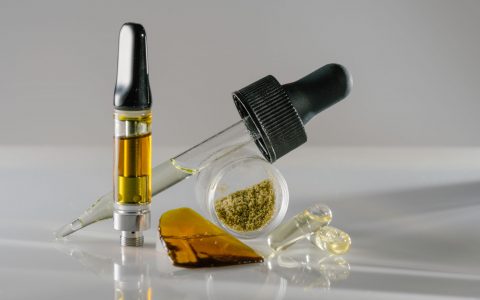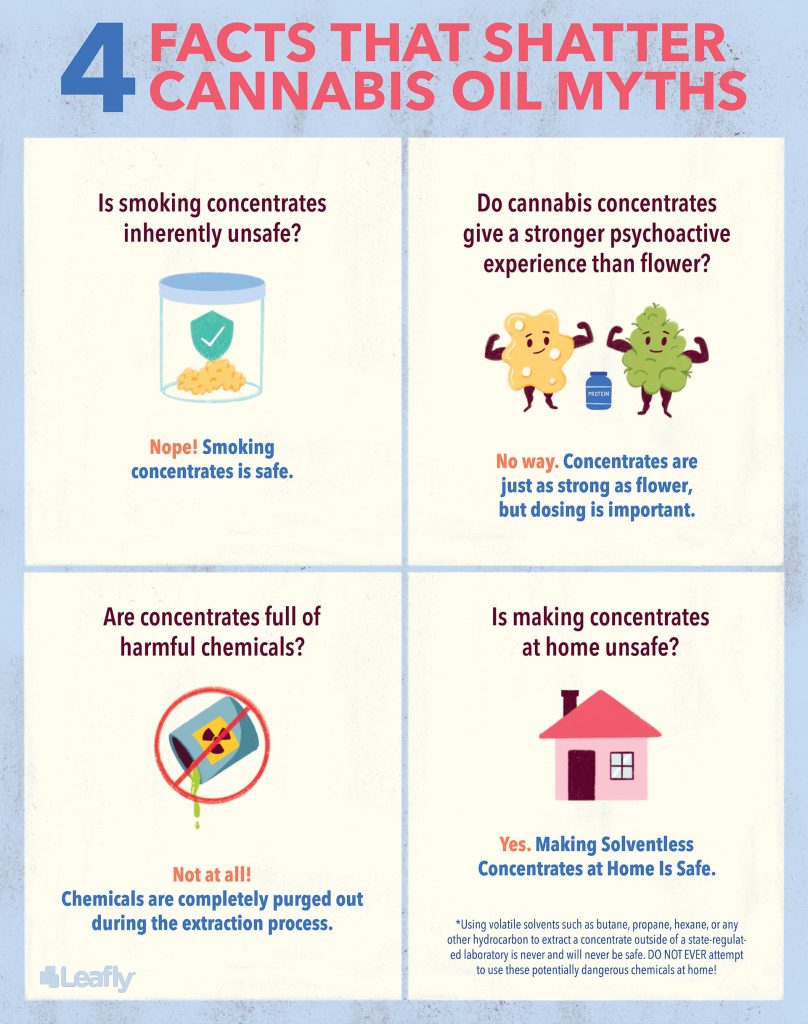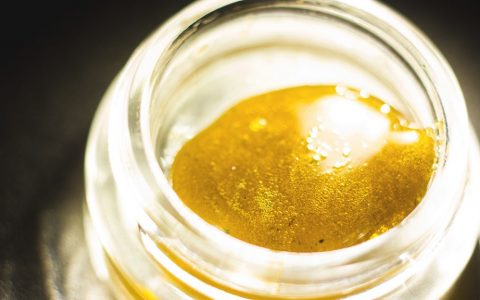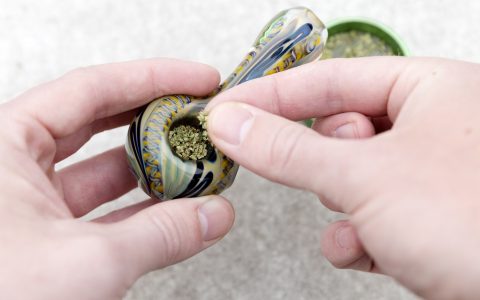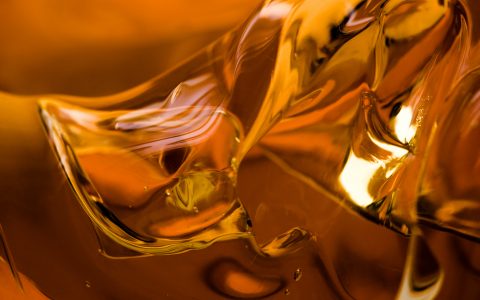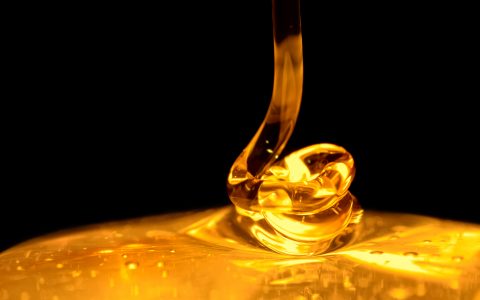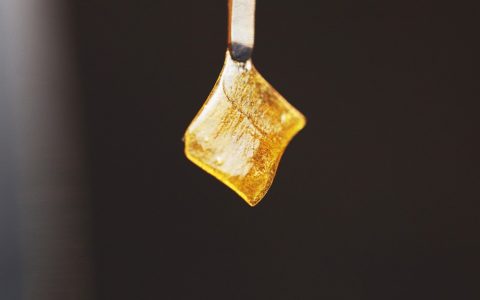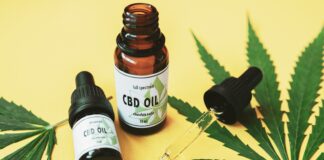The public perception of cannabis has improved dramatically over the past several years. People now more than ever are beginning to explore and learn about what the plant has to offer. But unfortunately, not all cannabis products have received the same warm embrace that the plant itself has.
Perhaps the most misunderstood and often misrepresented cannabis products are concentrates. Wax, shatter, dabs, oil, and resin are just some of the concentrates on the market, and some media outlets have likened these to hard narcotics such as crack cocaine.
Perpetuating misconceptions about cannabis concentrates damages retailers, consumers, and curious outsiders by spreading misinformation about a well-regulated and safe product that can be manufactured and consumed responsibly and without a great deal of risk.
The truth is, there are many misconceptions about cannabis concentrates. Here we’ll shed some light on them.
Misconception #1: Smoking Concentrates Is Inherently Unsafe
The Extraction Process
Even though it doesn’t look like flower, a concentrate is still cannabis. With concentrates, the desired element isn’t the green plant material itself, but the oil and resin stored in the trichomes on the surface of buds. These include, but aren’t limited to, cannabinoids such as THC and CBD, and the terpenes responsible for providing the flavor and aroma of that particular strain.
A cannabis concentrate is made by extracting the resin from the plant matter, leaving behind a “concentrated mass” of cannabinoids and terpenes. Processes include using diluting agents or solvents such as butane or propane, which must be purged before the concentrate is safe to consume. This is standard across all legal markets. Concentrates can also be made through solventless means.
Concentrates aren’t deadly, as they are nothing more than a concentrated form of the constituents contained in the plant. How concentrates are manufactured and what is contained in them is heavily regulated by the legal marketplaces they exist in.
Consuming
There is a great deal of misconception around the safety of using cannabis concentrates as well. Many claim that the use of torches or blistering hot nails likens the practice of dabbing to doing hard narcotics like crack cocaine.
This is not true. With proper instruction and guidance, the use of these tools isn’t any more dangerous than operating a stovetop. Furthermore, there are many ways to enjoy cannabis concentrates without ever having to use a torch or nail. Concentrates can be used to make edibles, or they can be mixed in with flower to heighten the euphoric experience.
It’s important to know that although cannabis concentrates are safe, it is always important to source these products within regulated markets and by licensed producers and retailers who must adhere to strict guidelines. This is the only way to ensure you get a safe, tested product.
Be sure to educate yourself on a product or consumption method before taking part to ensure the safety of it. This includes learning to use the tools involved as well as understanding how to dose correctly.
Misconception #2: Cannabis Concentrates Give a Stronger Euphoric Experience Than Flower
It is often assumed that cannabis concentrates have elevated levels of THC, and that they will get you more high than smoking the same equivalent in joints.
If you consume an equal amount of cannabinoids through flower as through concentrates, your body will process them the same. The difference is that a little bit of concentrate is the same as a lot more flower. Concentrates have potency levels in the 45 – 99.99% range, whereas flower has potency levels between 10 – 30%. Safely dosing (or titrating) is important.
Potency levels and chemotype profiles vary in both concentrates and flowers. It’s important to understand how to properly read a cannabis package label and to use that information to safely dose a cannabis product, no matter what form it’s in.
Misconception #3: Concentrates Are Full of Harmful Chemicals
A major misconception revolves around the potential dangers of using solvents for extracting and manufacturing cannabis concentrates.
Many extract manufacturers rely on chemical solvents such as butane, propane, or hexane to produce extracts such as shatter, wax, and various oils. These solvents tend to have a stigma around them because of their volatile nature—some can be highly explosive on their own—and partly to their controversial history of being used unsafely to produce extracts in an unregulated environment.
Today, all markets that allow for the manufacturing of these concentrates have strict regulations dictating how solvents are used, how much solvent can be left over in a final product, and information is presented to consumers through labelling and packaging.
Dangerous practices have no place in a regulated market. Volatile chemicals used in poorly ventilated or otherwise unsafe extraction conditions can lead to injury. These chemicals must be handled by properly trained professionals in safe and sterile laboratory environments.
If a product is available on the shelf of a licensed cannabis retailer, it should be just as safe to consume as any other product on the shelf, according to the regulatory body that oversees it. This applies to all solvents and all product, i.e. wax, shatter, oil, etc.
Misconception #4: Making Concentrates at Home Is Unsafe
Using volatile solvents such as butane, propane, hexane, or any other hydrocarbon to extract a concentrate outside of a state-regulated laboratory is never and will never be safe. DO NOT attempt to use these potentially dangerous chemicals at home.
There are several ways to make cannabis concentrates that don’t involve the use of hydrocarbon solvents. With a little bit of knowledge and some inexpensive tools, you can safely produce solventless hash at home, outside of a laboratory setting.
These methods include:
All three of these techniques can be performed safely at home with little risk of injury. They do not require dangerous chemicals to produce, nor do they require advanced and expensive machinery. You do not have to have an advanced degree to produce these fine concentrates, and mastering these techniques can be fairly simple.
Dry sifting is accomplished by rubbing cannabis flower and stems through finer and finer meshes of micron screens on to some parchment paper. The trichomes will break off from the plant material and fall through the micron screen onto a surface where it can be collected and cleaned for consumption.
Ice-water extracts can be produced using cold water as a solvent to remove trichomes from plant material. In many methods, this procedure is accomplished by using various micron bags that are designed to match the size of different trichomes. Cold water is introduced to the material as it sits in the bags. As the water passes through each bag, it removes impurities and leaves behind high-quality concentrated trichomes in a paste that can be dried and enjoyed.
Rosin pressing uses a combination of pressure and temperature to squeeze oil out of flower. As a relatively new technique in the solventless extract field, rosin has seen many great advances over the last five years. Its popularity stems from the fact that with very little overhead, anybody can effectively produce a full melt hash oil using standard household hardware.


